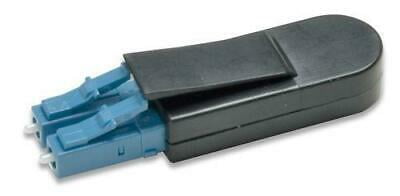

You can safely ignore the references to CSUs and Data Service Units (DSUs) in this document. See Loopback Tests for T1/56K Lines for detailed descriptions of loopback tests. You should explore this option only after you rule out the Cisco gateway and the cable run (to the telco demarc) as the source of problems. The telco-assisted loopback is done with the assistance of the telco.A loopback plug or an RJ-48X connector can create this hard loopback. A hard loopback (also known as a hard loop) is a physical loop created by wire.
#What is a loopback plug software
Soft loopbacks (also known as software loops or soft loops) are commands from test equipment that cause a network interface unit (NIU) or CSU to automatically send traffic back towards the sender.This document describes three types of loopback tests: This figure provides a general overview of loopback testing. Telcos consider everything connected to the inside of the SmartJack as the local loop and consider all local loop equipment the responsibility of the customer. A SmartJack is a type of network interface device (NID) that terminates the PRI/T1 from the Cisco gateway and that also provides some diagnostic capabilities.Ī very common capability provided by a SmartJack is loopback, where the signal from the telco is transmitted back to the telco. The SmartJack is often referred to or is involved in TAC calls on T1/E1 issues. The components you should try to eliminate as problematic include the VWIC (card and port) and the cable run (up to the SmartJack). Progress in stages toward the telco point of demarcation (demarc). Move the loopback testing out to the next component, and repeat Steps 1-3.If the testing is successful, it eliminates the VWIC as the problem component. Start at the Voice/WAN Interface Card (VWIC) on the Cisco gateway.The basic idea behind loopback testing is: Loopback testing is a very effective way to isolate a failing T1 (or E1).

Refer to Important Information on Debug Commands before you use debug commands.

Use the Output Interpreter Tool in order to view an analysis of show command output. The Output Interpreter Tool ( registered customers only) supports certain show commands. Use the Command Lookup Tool ( registered customers only) in order to obtain more information on the commands used in this document. How can there be efficient and effective progress on the issue? This document describes an important and useful troubleshooting method, known as loopback testing, and covers various loopback testing techniques.



 0 kommentar(er)
0 kommentar(er)
